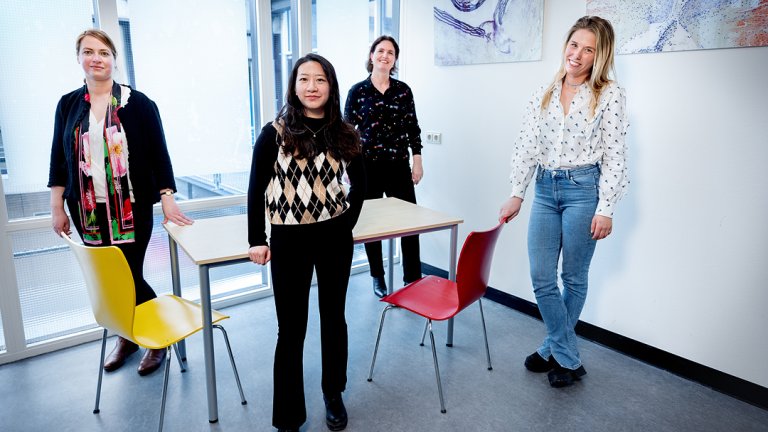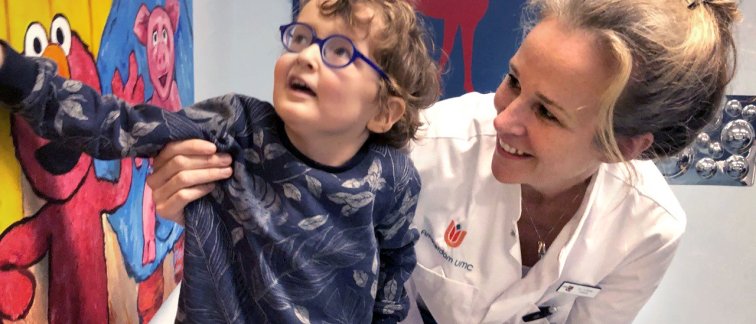What is Marfan syndrome?
Marfan syndrome is a rare genetic disease (3:10,000 incidence), where many different mutations in a structural protein, called fibrillin-1, causes variable pathology in different organs and organ systems, such as the eye, skeletal and cardiovascular system. Marfan syndrome is as rare as Cystic Fibrosis (CF), but unlike CF hardly anyone has heard of Marfan syndrome. Already, during adolescence patients with Marfan syndrome experience many symptoms and when not treated they often die of an aorta rupture before the age of 40. Currently, treatment options are limited to blood pressure lowering drugs and aorta surgery.

Support from a Marfan family
When we published that the food supplement resveratrol protected the aorta of our Marfan mice, one of our AMC patients asked why we could not perform a clinical study with resveratrol. This Marfan family provided the funding, via the AMC Foundation, of our RESVcue Marfan clinical study. PhD student Mitzi van Andel was hired to set up the study, which has enrolled 60 Marfan patients who are now on resveratrol. By the end of 2021 the study will end and we will analyze all data to see if there is cardiovascular improvement. Without this Marfan family our study would not have been possible, since funding for rare diseases is extremely difficult. The bonus of the involvement of this family has been to learn more about what they felt was important to measure or monitor. This led us to include psychological tests on wellbeing and fitness in the study.
The Marfan family taught us more about what they felt was important to measure or monitor.
Marfan mysteries
Even more rare is neonatal Marfan syndrome. Only very few mutations in fibrillin-1 cause this severe form, where it is not aorta problems, but heart failure that leads to mortality at around the age of 2, if not treated in time by surgical cardiac valve replacement. Interestingly and regrettably, it is a mystery why certain fibrillin-1 mutations cause a more severe form of Marfan Syndrome. That is exactly what we are looking into in two different studies. One study supported by ACS, is a collaboration of Dimitra Micha and Vivian de Waard, where PhD student Carmen Yap is growing cells of many different Marfan patients in order to identify various subtypes. By studying the cellular phenotype, we have observed that these different patient-derived skin fibroblasts are very informative. In the other study, supported by Stichting Steun Emma Kinderziekenhuis, pediatrician Leonie Menke is working with one of her patients named Sam (see photo in header). Sam has neonatal Marfan syndrome and his fibroblasts behave differently from most other Marfan cells. His mother recently published a book on her journey with her now 3-year-old son, entitled Een magisch getal (A magical number). A portion of the proceeds of her book is supporting our neonatal Marfan research at Amsterdam UMC. Via the internet, Sam’s mother has been in contact with other mothers of children with the same condition from around the world, who share their knowledge and experiences.
Performing research on a rare disease is challenging. However, we have found a great willingness of Marfan patients and their families to help in various ways in finding novel ways to treat Marfan syndrome and its symptoms.
This article is published in June 2021 in the ACS magazine 2021, page 8-9.



